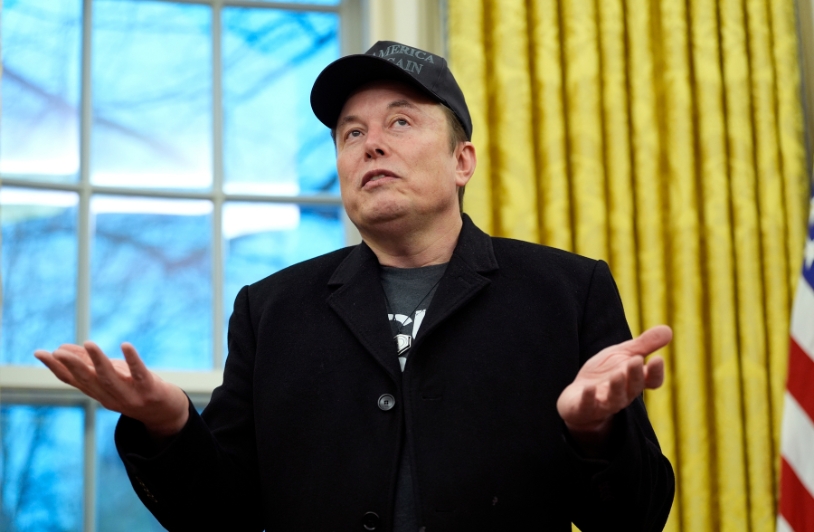National parks will be turning away visitors, income tax refunds and VA benefits may be delayed, forest fire preparations may not get underway as scheduled, civil rights complaints will be ignored — all as the effects of widespread and relatively random federal spending cuts being ordered by Elon Musk at the nod of Donald Trump.
In cities and towns across the country, including in Republican states, there is worry about the effects of spending cuts in Washington that are only beginning to show in services lost to dismissals, layoffs and “buyouts” of federal workers. The Washington Post found documents on how DOGE plans to expand dismissals to target staffers who are not in DEI roles and employees who work in offices established by law to ensure equal rights, including in civil rights cases or health coverage for minorities — surefire material for more lawsuits.
Once temporary halts end, the directives to cut tens of thousands of jobs from multiple agencies one way or another are going to spread in the form of lost services and benefits. What looks good at the White House will look different on the ground, and it is welcome to see news organizations turning to seek out the effects rather than partisan governmental double-speak about greatness.
Some of the DOGE cuts will produce intended results; Trump knows that dismissing staff at the Bureau of Consumer Protection will lessen complaints about businesses and banks, for example. But some cuts are showing up already in odd places. The Trump administration fired 300 staffers at the National Nuclear Security Administration as part of Energy Department reductions apparently forgetting or not knowing that these are people involved with managing the nation’s nuclear weapons. Energy officials at first tried to say they were clerical workers before backing off and even rescinding some layoffs, though their emails had been canceled.
The point is that the Musk DOGE effort at employee count reductions is scattershot and hasty, without even knowing the effects, never mind preparing to ameliorate them. They are shooting first and asking questions — or getting complaints — later. It’s sloppy, overly hasty, and too random to be trusted as good government by any definition.
Of course, in freezing money as well as launching dismissals, the Trump program also is prompting serious humanitarian issues, putting foreign aid workers at risk, and endangering a list of Americans from farmers to researchers who were receiving grant or contracted money.
Reducing Employees
Anyone in management or unions, mid-manager or worker, who has been involved in employee reductions knows that the least efficient way to address employment numbers is through blanket reductions, whether in undesignated buyouts or by designating all “probationary” workers on the job for up to two years in government jobs. Anyone who hires knows the cost of hiring and training is a disincentive requiring balance with terminations.
The reason is simple: It’s a guarantee to not knowing what functions will have to be replaced. Dismissing 300 Federal Aviation Administration workers will endanger the nation’s aviation, for example. Dismissing military spouses from federal jobs may have affect combat-ready availability, Cutting1,000 from the Veterans Affairs Department is guaranteed to increase waits among veterans for service.
But the approach from Musk and Trump reflects politics, not government efficiencies. Musk wants to show he can do anything to shrink the government rolls, and Trump wants Civil Service protections removed for absolute Trump loyalists, no matter how many federal workers there are. Both want “savings” from government worker rolls to pay for permanent tax cuts that will benefit the wealthy and corporations and will pay for programs like mass deportation.
An opinion piece from MS-NBC noted that government workers have a routine yearly churn and that despite the numbers of dismissals being announced, we have not reached those percentages yet. The issue is who and how the dismissals, layoffs, agency closures are coming about, whether any thought is going into how many replacements will be needed, or whether we are eliminating services and benefits. Restoring or maintaining jobs and services will cut into that savings.
Effects Just Emerging
A New York Times article this week outlined how Huntsville, Ala., which has moved from agricultural jobs to become dependent on government contracts, is coping with sudden uncertainty that affects every aspect of local life. Politico started cataloguing specific services and benefits that will be cut.
Among their examples, wildfire preparations even amid a destructive fire season will be curtailed by loss of 3,400 U.S. Forest Service workers; at the Centers for Disease Control and Prevention, the loss of 2,800 probationary employees and 400 buyouts, will reduce about a tenth of those who gather information about communicable disease; Park Service cuts of 800 will mean less public access to national parks and paths. Similar reductions at the Interior Department and the Bureau of Land Management likely will force complications in plans by the same government to open protected lands to drillers and miners who will need work from land-use planners and engineers.
Haphazard cuts at the GSA, Government Services Administration, could be disastrous for millions of Americans who rely on the agency’s services like Login.gov, the central login system for Medicare, Medicaid and Social Security. Without a public explanation, The Trump administration fired 20 immigration judges last week — at a time when the administration wants more judges to clear the growing backlog of 3.7 million cases.
Clearly, none of this addressing morale or productivity of those whose jobs remain. One news report over the weekend noted that workers ordered to return form remote jobs to specific workplaces were arriving to find that downsized spaces did not have desks or computers, and that managers were advised to flip a coin to see who was assigned rotating desk space.
Law aside, it seems reasonable to believe that worker and service reductions will have a political effect. The changes are coming too fast and furious for the private section or for many communities to respond intelligently, and when combined with varying social, healthcare, national security, and diversity-equity-inclusion regulation changes, creating an atmosphere in which businesses lack the certainty they require to make investments in adding jobs.
Whether you favor these Trump/Musk moves or oppose them, it would seem important to look beyond White House assertions to how the pronouncements are playing out on the ground. Politicians seem loathe to put in that work; journalists should be doing more of it, regardless of the politics.
Over the next months, we should be measuring economic figures that reflect increased unemployment and a return of inflationary prices. We should be illustrating what job loss means, and what happens when tariffs and trade wars, or deportations and split families, or undercutting of civil rights, education, healthcare systems, the arts world mean in real terms.
We don’t seem to have a formal measure for national anxiety.
CLICK HERE TO DONATE IN SUPPORT OF OUR NONPROFIT EFFORTS TO PROTECT YOUR RIGHTS




